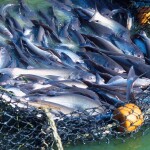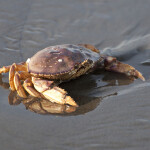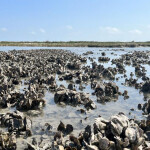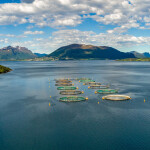With sustainable standards for its fresh aquaculture, Colombia aims to consolidate its share of US market
Sponsored
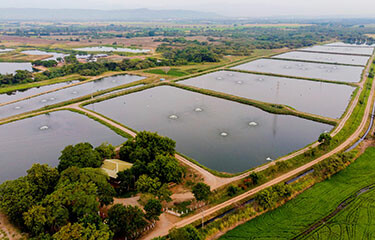
Colombia’s innovative and responsible approach to tilapia and trout production continues to pay off in 2022, as demand for the country’s sustainable seafood products intensifies across key markets.
As of November 2021, Colombia exported tilapia and trout worth USD 67.8 million (EUR 59.4 million) globally, a 3 percent increase over 2020 levels. Of that total, 94 percent, or USD 63.8 million (EUR 55.9 million), was exported to the prized U.S. market – a 3 percent uptick compared to the previous year.
Global trout exports from Colombia reached USD 10.6 million (EUR 9.2 million) as of November 2021, USD 10.0 million (EUR 8.7 million) of which went to the U.S. Meanwhile, the country exported tilapia volumes worth USD 57.2 million (EUR 50.1 million) worldwide during the period, with USD 53.8 million (EUR 47.1 million) of that total destined for the U.S. market specifically, according to the Colombian Federation of Aquaculture Farmers (Fedeacua).
These figures represent the latest chapter in Colombia’s aquaculture success story, which has been years in the making: Between 2016 and 2021, the country’s tilapia and trout exports grew by 51 percent, rising from USD 44.8 million (EUR 39.2 million) to USD 67.8 million (EUR 59.4 million).
In 2021, as the global COVID-19 pandemic raged around the world, 56 percent of Colombia’s aquaculture exports, valued at USD 63.8 million (EUR 55.9 million), arrived in the U.S., a crucial destination for seafood suppliers.
Now, Colombia is not only the top provider of fresh tilapia for the U.S – with 45 percent of the market share – but it is also renowned for its farm-raised trout. These aquaculture products possess sustainable and environmentally-friendly farming properties, qualities that serve to set them apart in the U.S. market, Flavia Santoro, president of ProColombia, the government agency in charge of promoting Colombian exports internationally, told SeafoodSource.
It is not only a matter of quality, but of availability as well that serves to set Colombia’s seafood products apart, according to Santoro. On average, Colombian products reach U.S. consumers’ tables just within 24 to 36 hours, Fedeacua highlighted.
“Colombia has positioned itself as the main fresh tilapia supplier for the United States, due to the quality and flavor of the product, in addition to the commercial benefits and tariff advantages granted by the free trade agreement between both countries. Other products such as fresh or frozen trout also arrive with certified quality and have gained market share during the last years,” Santoro said.
Colombian producers’ extensive efforts in the sustainability realm have also served to differentiate their products in key markets.
The first country to earn group recognition for tilapia under the Global Aquaculture Alliance’s Best Aquaculture Practices (BAP) certification program, Colombia now has 47 farms and six processing plants with BAP-approval operating within its borders. The country was also a leader in obtaining general certification for tilapia under Fedeacua’s Quality and Safety program in 2017. Additionally, four Colombian producers – located in the departments of Huila, Boyacá, Cundinamarca, and Antioquia – have achieved Aquaculture Stewardship Council (ASC) certification.
What fish raised in Colombia eat is vetted through the lens of sustainability as well, ProColombia explained. BPA-certified U.S. soy, “one of the most sustainable vegetable proteins used as animal feed for aquafarming,” factors prominently into Colombia’s aquaculture industry, which adheres to the U.S. Soy Sustainability Assurance Protocol (SSAP) promoted by the U.S. Department of Agriculture, Fedeacua added.
Furthermore, regarding social responsibility, Colombia’s seafood farming sector has been investing in the communities it operates within, as well as new technologies to further aid in its production process, ProColombia said.
The South American country is looking to further affirm the spot gained by its aquaculture products with a new origin seal, primarily geared toward boosting buyer confidence and awareness for Colombia’s seafood output, while also encouraging overall consumption, according to Santoro.
Launched in 2022 by its developers, Fedeacua and the Colombian Country Brand, the new distinction is available to aquaculture companies legally constituted in Colombia that can demonstrate compliance with national production regulations.
Colombian fish products that bear the distinction must originate from farms in Colombia that possess corresponding permits issued by the National Aquaculture and Fisheries Authority. They also must be processed by facilities duly accredited by Colombia’s national health authority, according to Fedeacua.
“Fedeacua and the Colombian producers have always worked with products and processes that meet international standards of sustainability and quality, allowing us to conquer different international markets. All this effort is reflected in the construction of this new distinction with the Country Brand, which allows our customers to identify and recognize the quality of Colombian aquaculture products,” Fedeacua Director Cesar Pinzon said of the distinction.
Those interested in learning more about Colombia’s high-quality, sustainable, aquaculture products are encouraged to contact ProColombia.

